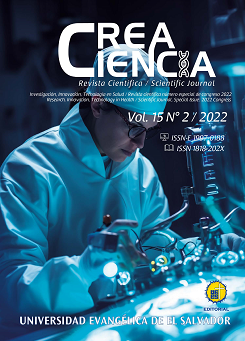Factores de estrés en docentes universitarios y presencia de síndrome de burnout
DOI:
https://doi.org/10.69789/creaciencia.v15i2.664Resumen
Al discutir temas como el estrés y el síndrome de burnout se deben tomar en cuenta una serie de elementos y condiciones relacionadas a estas situaciones, especialmente al referirse a una profesión como la de docente a nivel universitario; sobre este tema existe una serie de investigaciones como un artículo realizado por la Universidad Pedagógica de El Salvador titulado “Impacto de las alteraciones psicosociales en la población docente de educación superior de el Salvador en 2012”. El estrés es una enfermedad que se encuentra presente en todas las profesiones, en unas más que en otras, teniendo presencia más en aquellas profesiones en las cuales se tiene contacto con otras personas, como la docencia. Los docentes están expuestos a muchos factores que pueden aumentar sus niveles de estrés, desde factores internos como la personalidad o externos como el ambiente de trabajo. Al detectar la presencia de altos niveles de estrés en un docente se está a la puerta de caer en el síndrome de burnout, ya que muchos autores sostienen que un estrés laboral crónico y mantenido puede ser causa de este síndrome. El objetivo de este estudio fue detectar la presencia de estrés y síndrome de burnout en docentes de la Universidad Técnica Latinoamericana.
Descargas
228
Descargas
Publicado
Cómo citar
Número
Sección
Licencia

Esta obra está bajo una licencia internacional Creative Commons Atribución-NoComercial-CompartirIgual 4.0.
© Crea Ciencia
Declaración de originalidad y cesión de derechos
El artículo debe ser enviado con una declaración de originalidad, responsabilidad y cesión de derechos de copia del manuscrito, escaneada y firmada por el autor o por uno de los autores cuando la autoría es colectiva (autor designado), haciendo constar que el texto no ha sido publicado anteriormente en formato impreso o electrónico, que no se presentará a ningún otro medio antes de conocer la decisión de la revista Crea Ciencia y que, de ser aceptado para su publicación, los autores transfieren los derechos de copia en todas las formas y medios conocidos. Al término de seis meses de la publicación, el texto puede ser compartido en otra revista citando la primera versión del artículo publicado en Crea Ciencia y consignando su número y volumen. En caso de no ser publicado el artículo, la UEES accede a retornar los derechos enunciados a sus autores.

Los artículos de Crea Ciencia están publicados en acceso abierto bajo una licencia de Creative Commons Reconocimiento-NoComercial 4.0 Internacional.

